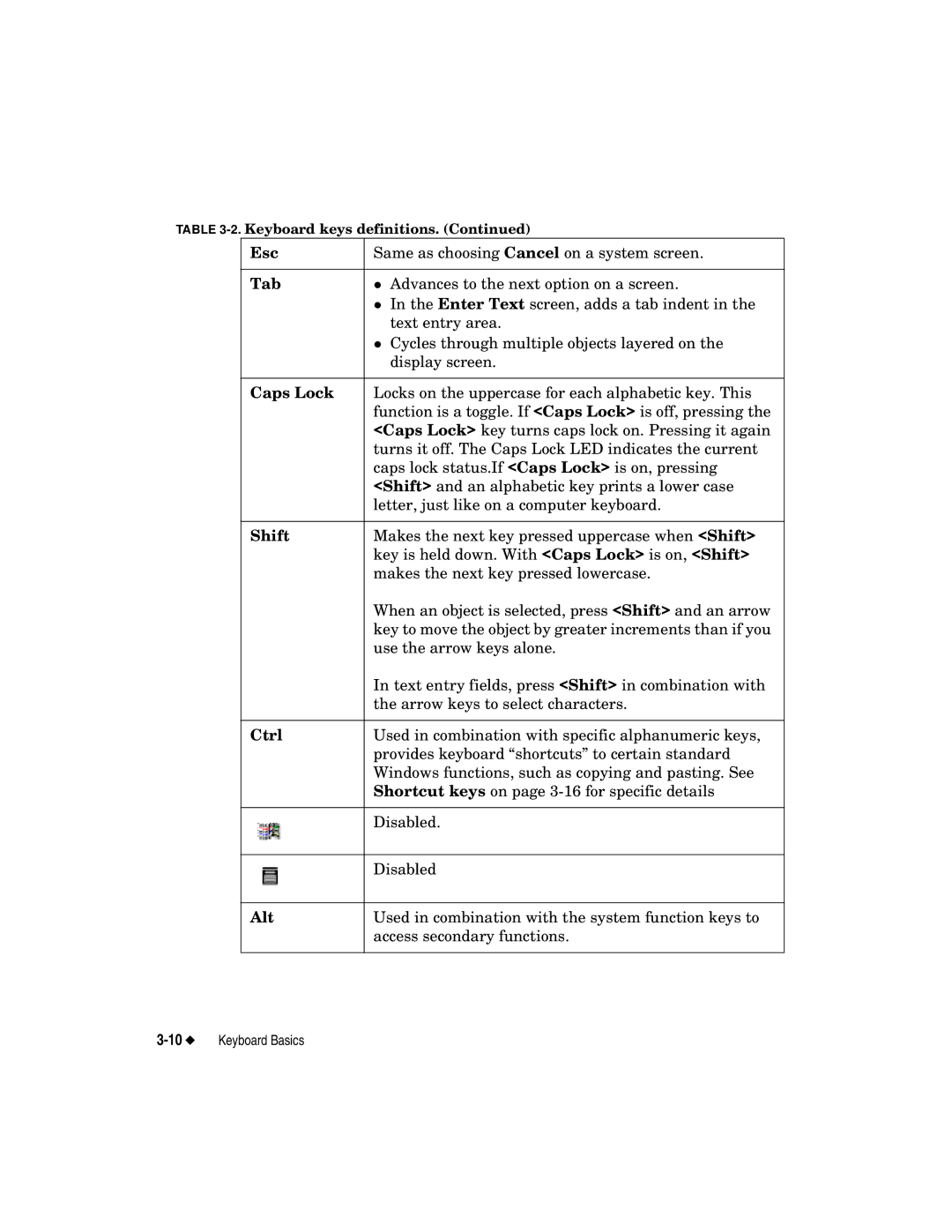TABLE
Esc | Same as choosing Cancel on a system screen. |
|
|
Tab | Advances to the next option on a screen. |
| In the Enter Text screen, adds a tab indent in the |
| ztext entry area. |
| Cycles through multiple objects layered on the |
| display screen. |
|
|
Caps Lock | Locks on the uppercase for each alphabetic key. This |
| function is a toggle. If <Caps Lock> is off, pressing the |
| <Caps Lock> key turns caps lock on. Pressing it again |
| turns it off. The Caps Lock LED indicates the current |
| caps lock status.If <Caps Lock> is on, pressing |
| <Shift> and an alphabetic key prints a lower case |
| letter, just like on a computer keyboard. |
|
|
Shift | Makes the next key pressed uppercase when <Shift> |
| key is held down. With <Caps Lock> is on, <Shift> |
| makes the next key pressed lowercase. |
| When an object is selected, press <Shift> and an arrow |
| key to move the object by greater increments than if you |
| use the arrow keys alone. |
| In text entry fields, press <Shift> in combination with |
| the arrow keys to select characters. |
|
|
Ctrl | Used in combination with specific alphanumeric keys, |
| provides keyboard “shortcuts” to certain standard |
| Windows functions, such as copying and pasting. See |
| Shortcut keys on page |
|
|
| Disabled. |
|
|
| Disabled |
|
|
Alt | Used in combination with the system function keys to |
| access secondary functions. |
|
|
